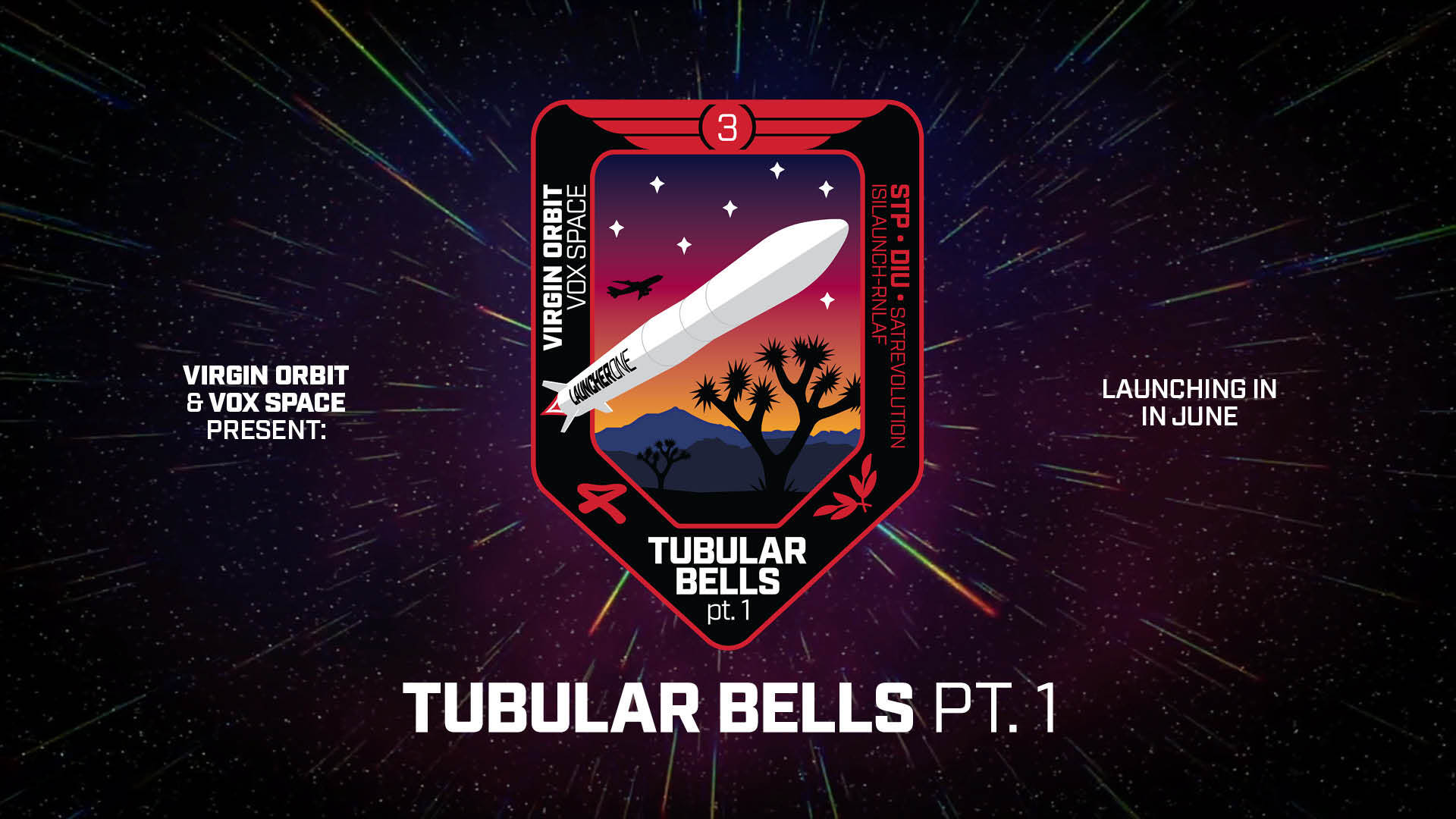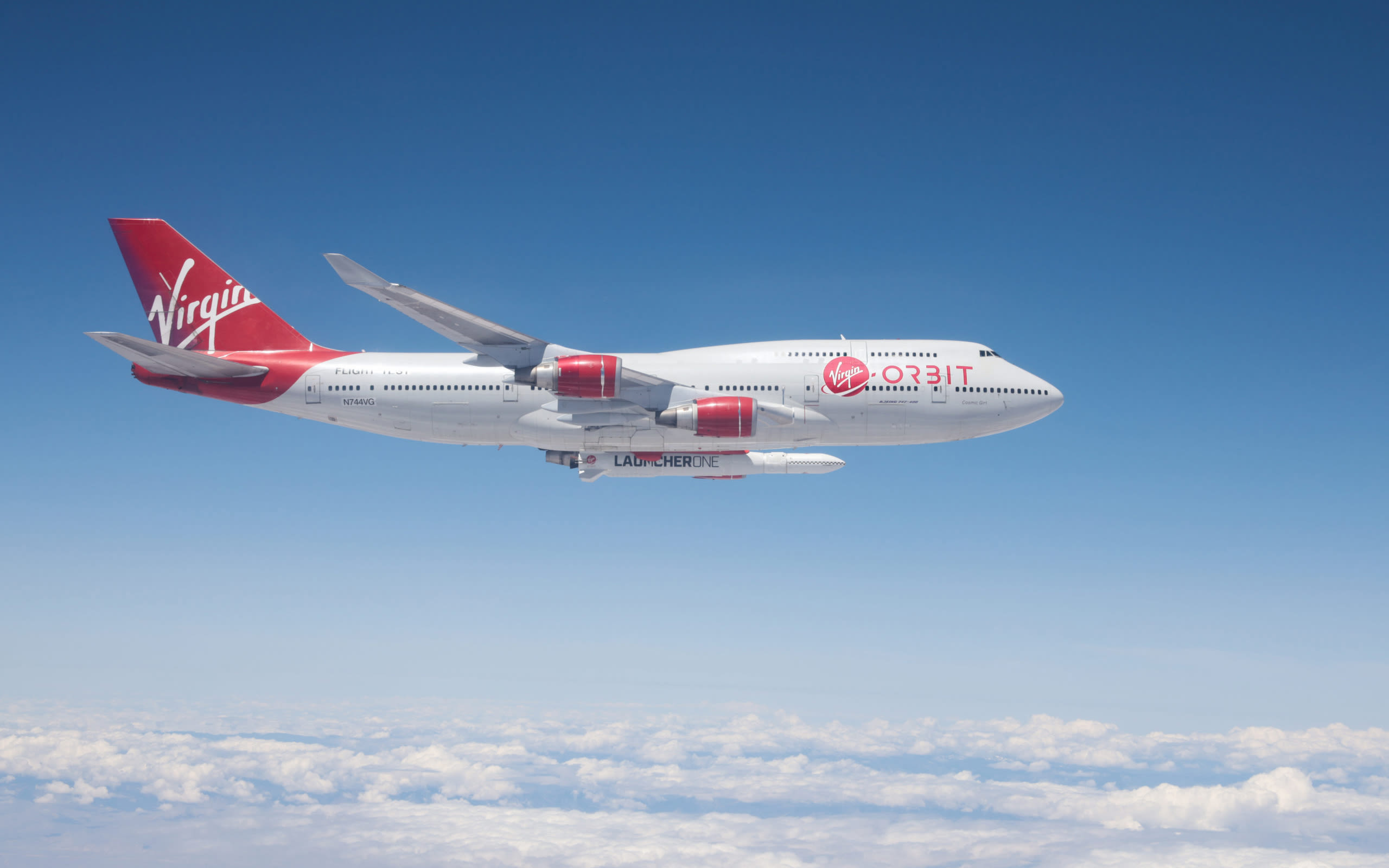Virgin Orbit's next launch
The launch window for Virgin Orbit’s next mission to space is open and for the first time ever you can watch it live.
This mission comes after a successful flight into orbit earlier this year. Cosmic Girl, Virgin Orbit’s adapted Virgin Atlantic 747 carrier aircraft, soared to 30,000ft to launch the Virgin LauncherOne rocket, which took off from under its wing, delivering satellites into orbit.
This mission is called Tubular Bells, Part One, in homage to Virgin’s musical roots and Mike Oldfield’s classic Virgin Records album.
Progress update
LauncherOne has been shipped to Mojave Air and Space Port, where it is now comfortably mated to Cosmic Girl’s left wing.
The team has been hard at work completing final checks ahead of the mission – including a hugely successful cryoload. Cryoload is the first time Virgin Orbit loads cryogenic propellants (i.e. liquid oxygen for those of us who aren’t scientists) onto the rocket and fully pressurize the system all the way up to flight-like levels. During this test, Virgin Orbit was able to achieve all of its planned objectives, including 100% LOX and fuel fill and nominal pressurization of all high-pressure gas systems with no tank leakage.
This successful test meant that wet dress rehearsal was next – and, like every rocket, wet dress rehearsal is the one big hurdle prior to launch, serving as an opportunity to run through all combined launch operations up until takeoff.
The team also made sure the satellites were ready for their journey to earth orbit. On this flight, there are a total of seven spacecraft from the Department of Defense Space Test Program, SatRevolution, and the Royal Netherlands Air Force.
Why Virgin Orbit is launching satellites
Small satellites have huge potential to change people’s lives for the better. They connect us to each other, help us understand the world around us, keep us safe, grow the world’s economies, and expand the limits of human knowledge.
In recent years, satellites have gotten smaller and cheaper but satellite launches can still be a challenge, as companies and researchers are often forced to wait many months for a rideshare on larger rockets with primary payloads, meaning they have little control over their schedule or orbital destination. Enter Virgin Orbit.
Like the satellites its customers are flying, its launch system is light, fast, flexible, and affordable. Virgin Orbit uses a 747 airplane and a runway rather than a launch pad - this is a route to space that can be made from any airport in the world.
Watch the mission live
For the first time ever you can watch the mission live on launch day with Virgin Orbit’s official mission livestream, available via their YouTube page (or at the top of this article!). From interviews with customers to a deep dive into our patch design process, there’s no better way to get the full story behind this launch.
As part of its quest to ensure no one is excluded from space, Virgin Orbit is providing the audience with some additional accessibility options during the livestream, including live closed-captioning and an on-screen American Sign Language (ASL) interpreter. Alternatively, you can follow along as on Twitter as the team live-tweet the mission @VirginOrbit. Stay in the loop by following on Twitter, Facebook, LinkedIn, and Instagram.





